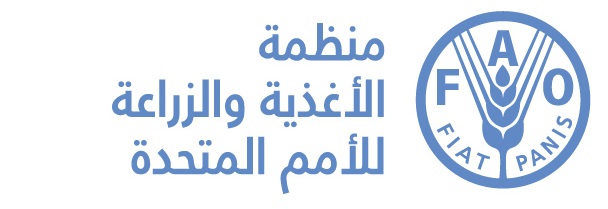Panama disease tropical race 4, Fusarium oxysporum f. sp. cubense tropical race 4
- Publication Date
- أربعاء, 12 يوليو 2017, 07:23
- اخر تحديث
- مايو 9, 2022, 12:11 ص
- Report Number
- AUS-84/2
- الدولة
- Australia
- Pest Id
- Fusarium oxysporum f. sp. cubense - (FUSACB)
- Report Status
- Final
- Hosts
- The affected agricultural hosts are restricted to the family Musaceae. The following taxa are known to be susceptible: • Musaceae: Musa spp. (bananas), including Musa acuminata, Musa balbisiana and Musa textilis, as well as hybrid taxa. Fusarium oxysporum f. sp. cubense tropical race 4 has also been isolated from a range of weed and grass roots. These plants are asymptomatic and their role in the disease infection cycle of banana plants is unknown.
- Pest Status (old values from ISPM 8 -1998 )
-
- Present: subject to official control
- Pest Status (ISPM 8 - 2021)
-
- Present: not widely distributed and under official control
- Geographical Distribution
- F. oxysporum f. sp. cubense tropical race 4 was detected in the Northern Territory in 1997, restricted to properties at Berry Springs, Lambell’s Lagoon, Middle Point and Humpty Doo. The pathogen was also detected in Queensland in 2015, and is restricted to a single property near Tully.
- ملخص
Fusarium oxysporum f. sp. cubense blocks the vascular system of infected banana plants, causing them to wilt and die. Panama disease can spread between adjacent banana plants by root to root contact and by the movement of soil and water infected with fungal spores. Weevil borer insects are also known to carry the pathogen. Long distance spread of Panama disease occurs through the movement of infected planting material and soil, and can also be carried on contaminated tools, machinery, footwear and clothing.
All Australian states and territories have restrictions in place for known pathways for Panama disease tropical race 4. F. oxysporum f. sp. cubense tropical race 4 is not considered technically feasible to eradicate.
- Danger
- F. oxysporum f. sp. cubense tropical race 4 (Panama disease tropical race 4) poses a significant threat to the global banana industry. It infects most banana varieties including the main commercial variety in Australia, Cavendish. Internationally, the disease has had a significant impact on local economies. The pathogen has caused severe damage to Cavendish cultivars in Malaysia, Indonesia, South China, the Philippines and the Northern Territory of Australia (Ploetz, 2006; Molina et al., 2008; Buddenhagen, 2009). Banana producing states and territories in Australia have imposed restrictions on the movement of banana material and associated machinery and equipment moving from the Northern Territory and from banana producing areas of Queensland. In Queensland, Panama disease tropical race 4 has been confirmed on a singly property in Tully. The infested property, and a second property linked through common ownership and management, have been purchased by the Australian Banana Growers’ Council and all farming operations have ceased. All banana plants on the property have been destroyed, access to the property is restricted, and animal exclusion fencing is being erected. Under the Queensland Biosecurity Act 2014 (the Act) restrictions apply to infested properties and properties suspected of having Panama disease tropical race 4. In Queensland, under the Act, Panama disease tropical race 4 is category 1 restricted matter. This means that, by law, plants showing signs of disease must be reported to Biosecurity Queensland for assessment. Under the Biosecurity Act 2014, Queensland has established quarantine areas to protect the banana industry from the movement of plant pests and diseases (including Panama disease tropical race 4) into and within the state. The movement of risk items into or out of these quarantine areas may require an inspection and the issuance of a biosecurity certificate to indicate compliance with the legislation. A program of risk-based surveillance of the banana production region of Queensland has not detected Panama disease tropical race 4 on any other property. Under the surveillance program, properties with a known link to the infested property, representing approximately 70% of the planted industry area have been surveyed on multiple occasions. 100% of the planted area will have been surveyed by 30 June 2017. A program of surveillance is expected to continue so that any new incidence of the disease may be contained.
- Contact for info
- Australian Chief Plant Protection Officer Australian Government Department of Agriculture and Water Resources GPO Box 858 Canberra ACT 2601 [email protected]
- Report files
- الموقع
- Issue keywords
- Commodity keywords

